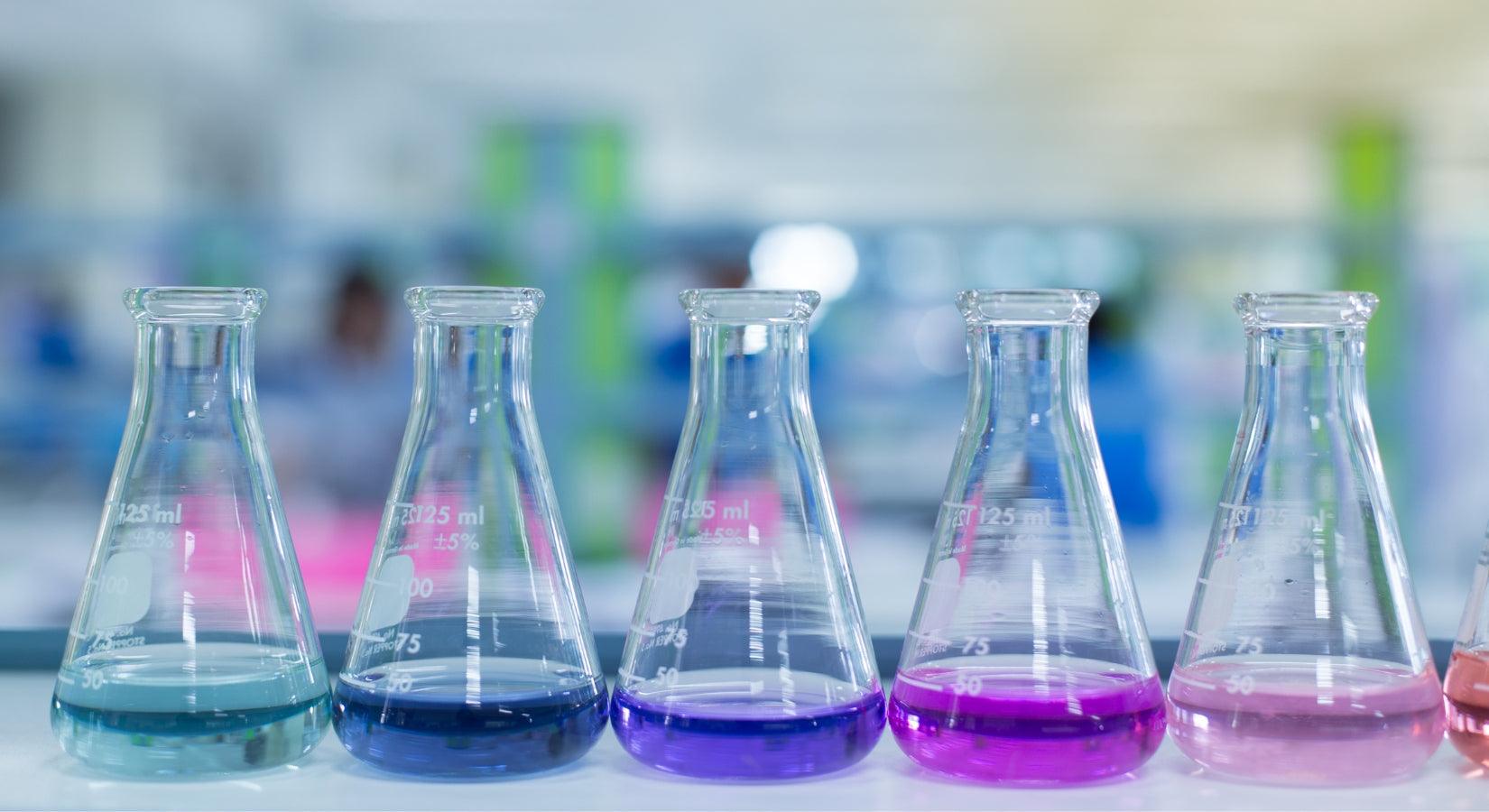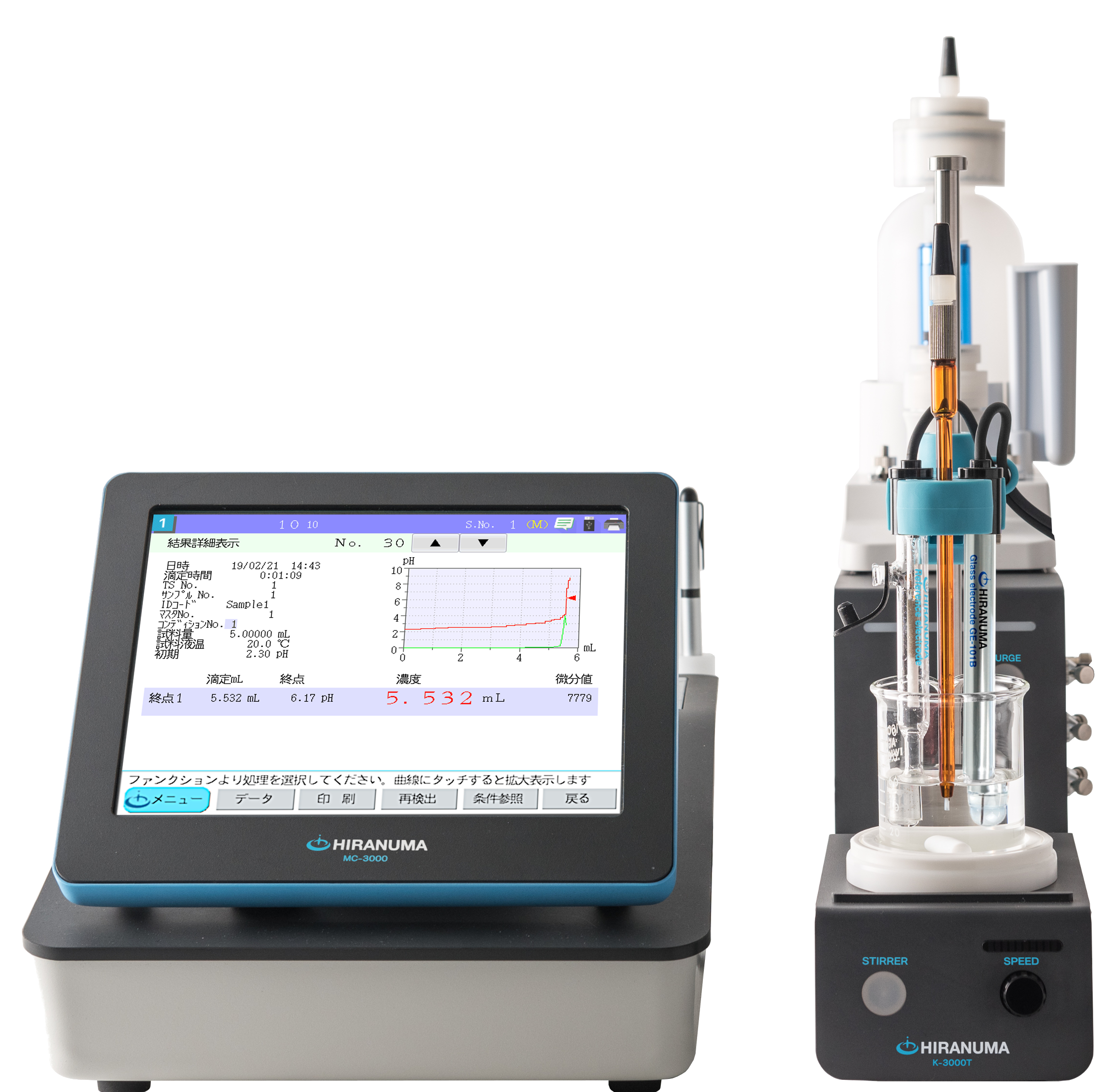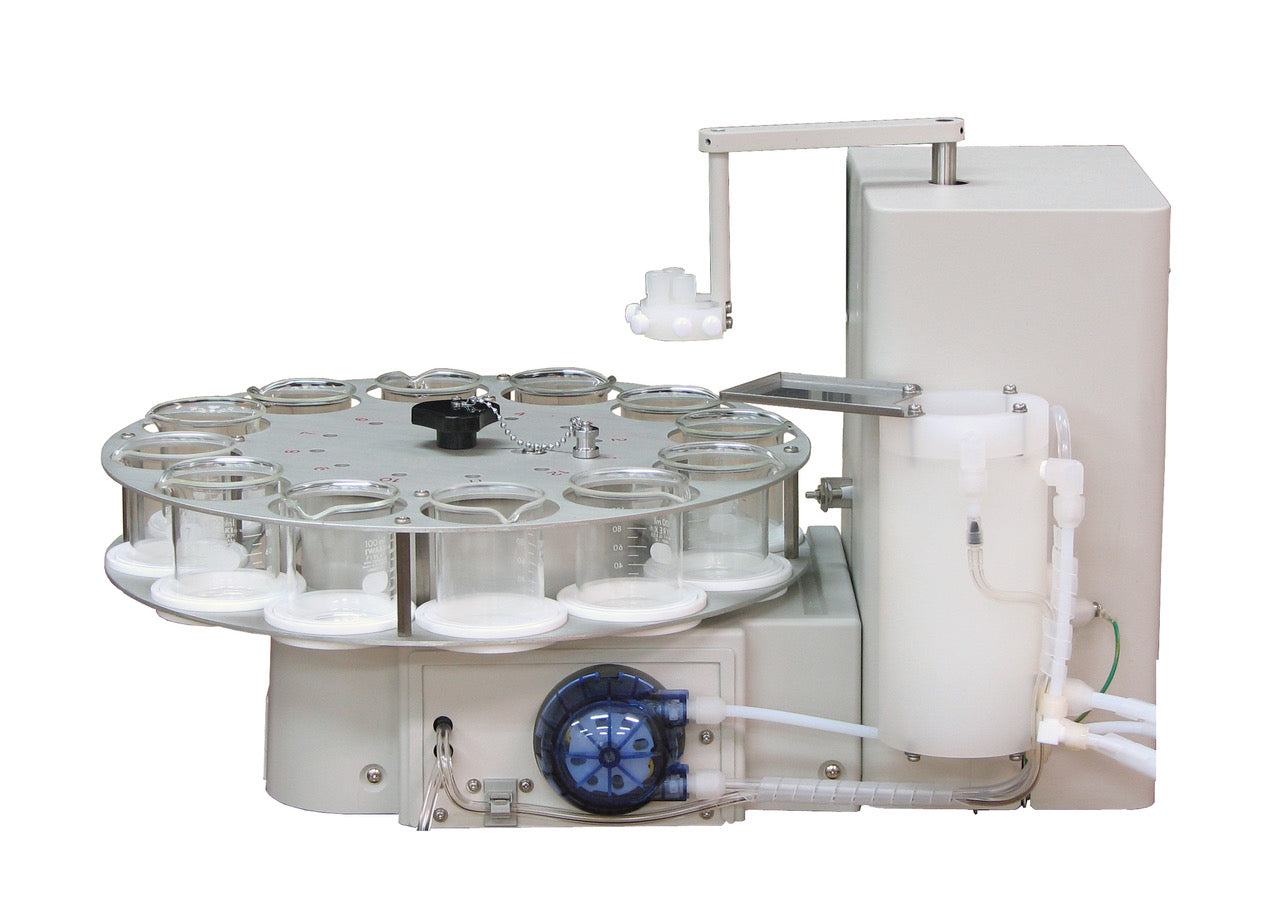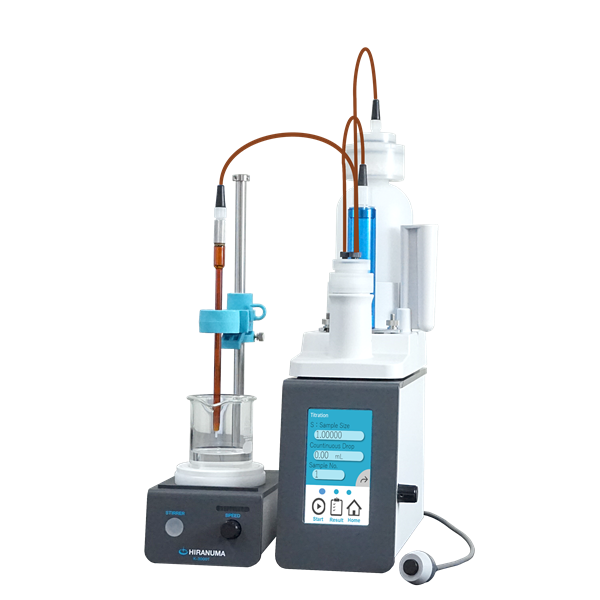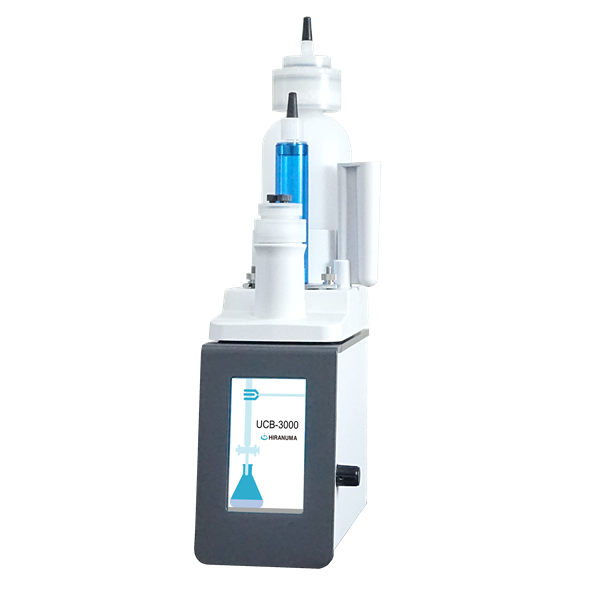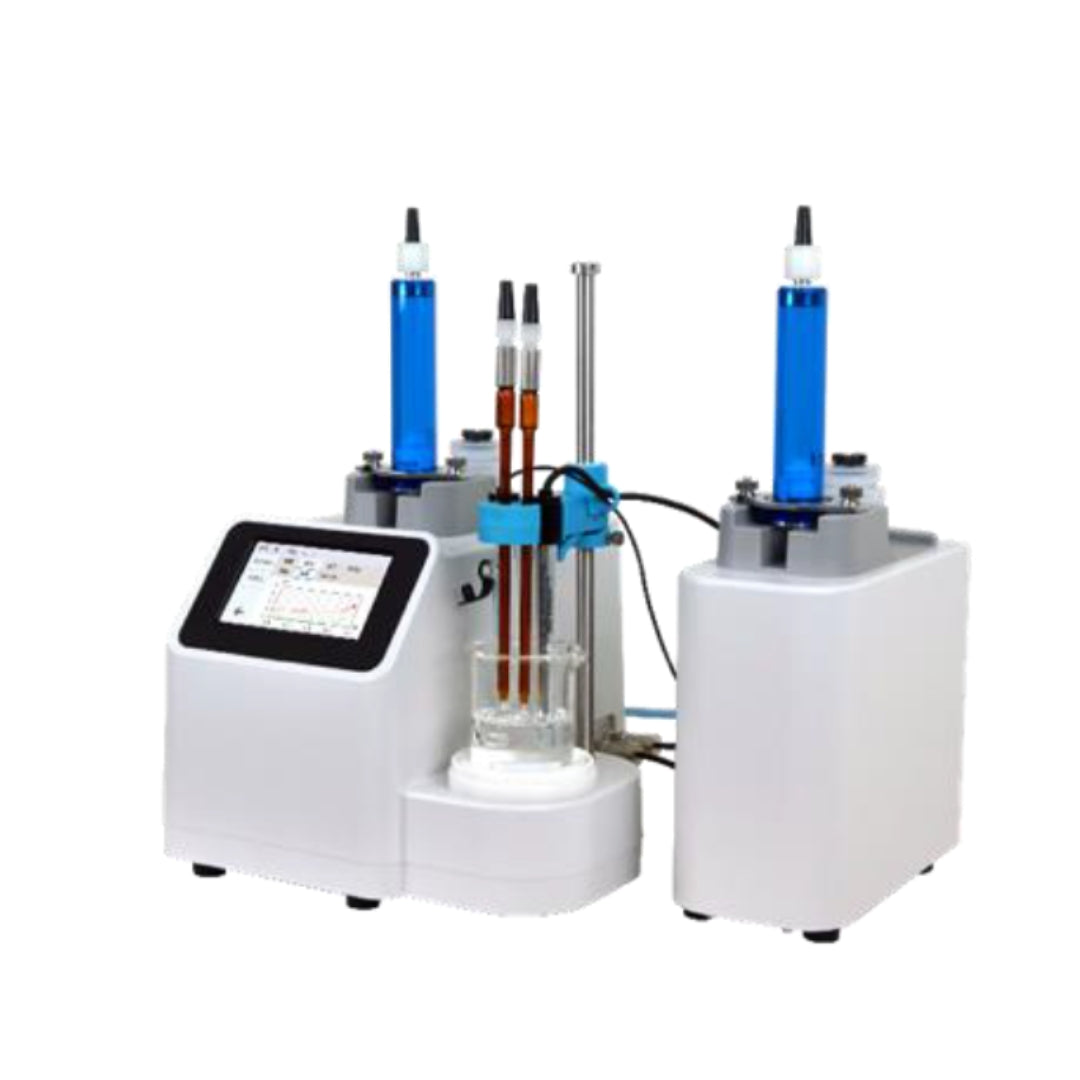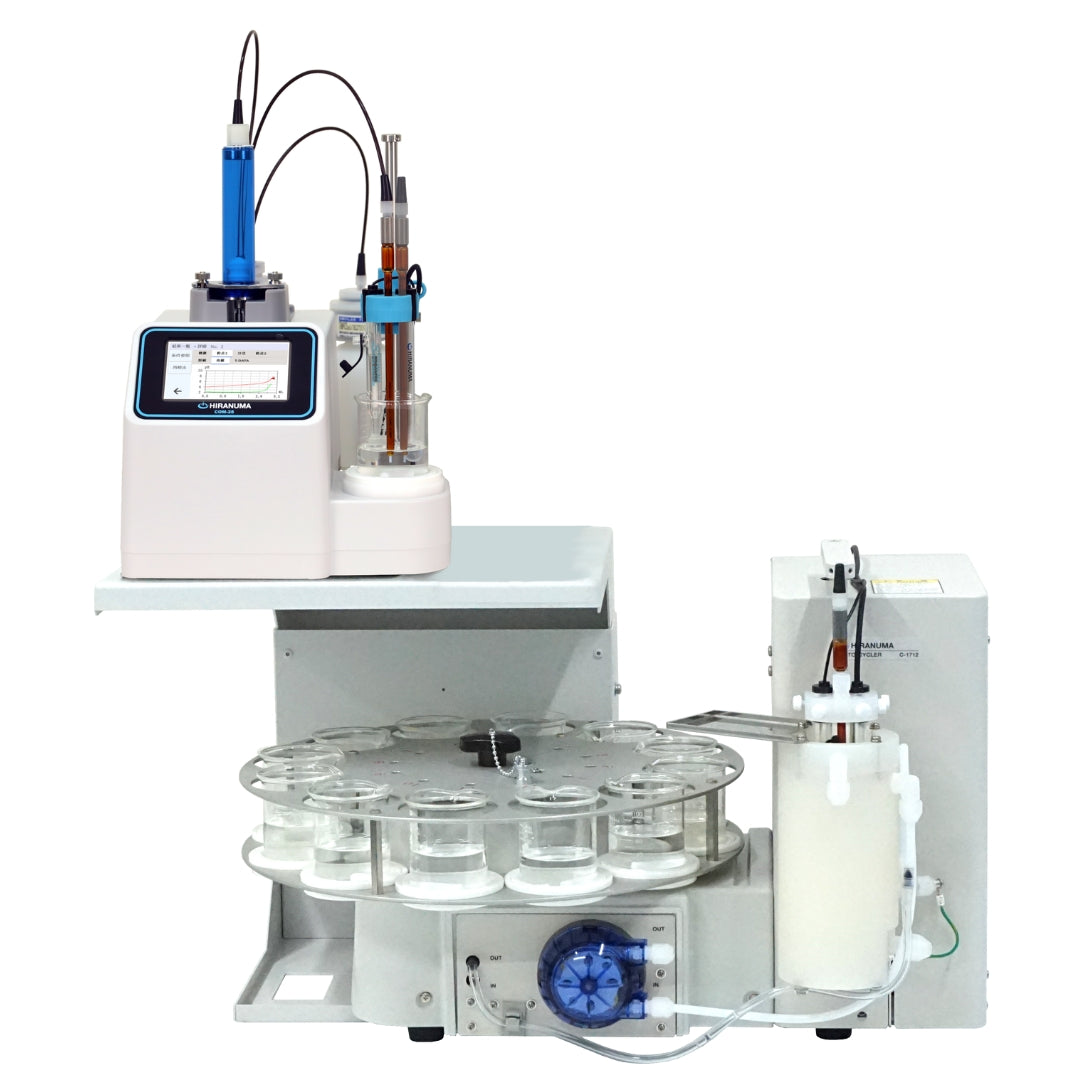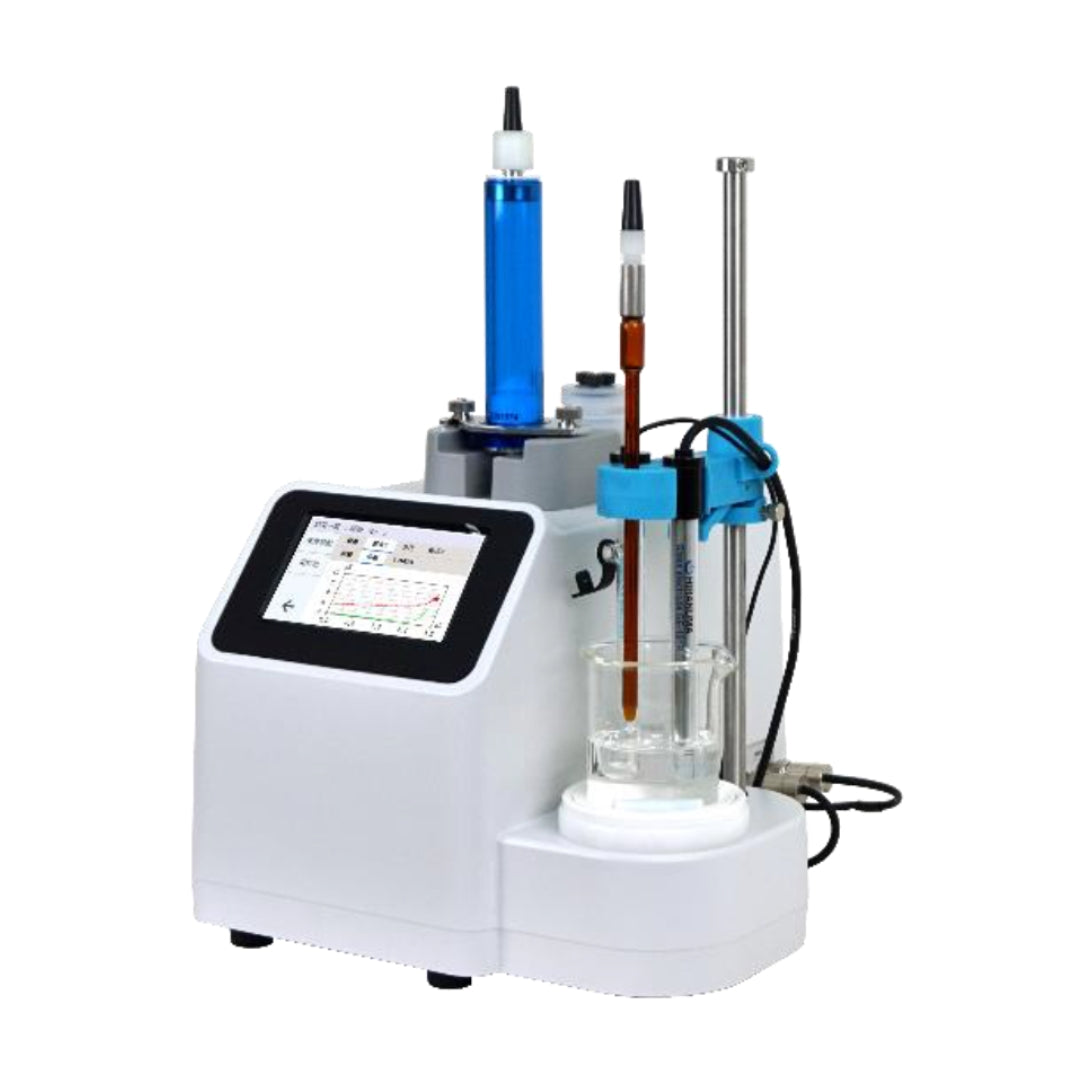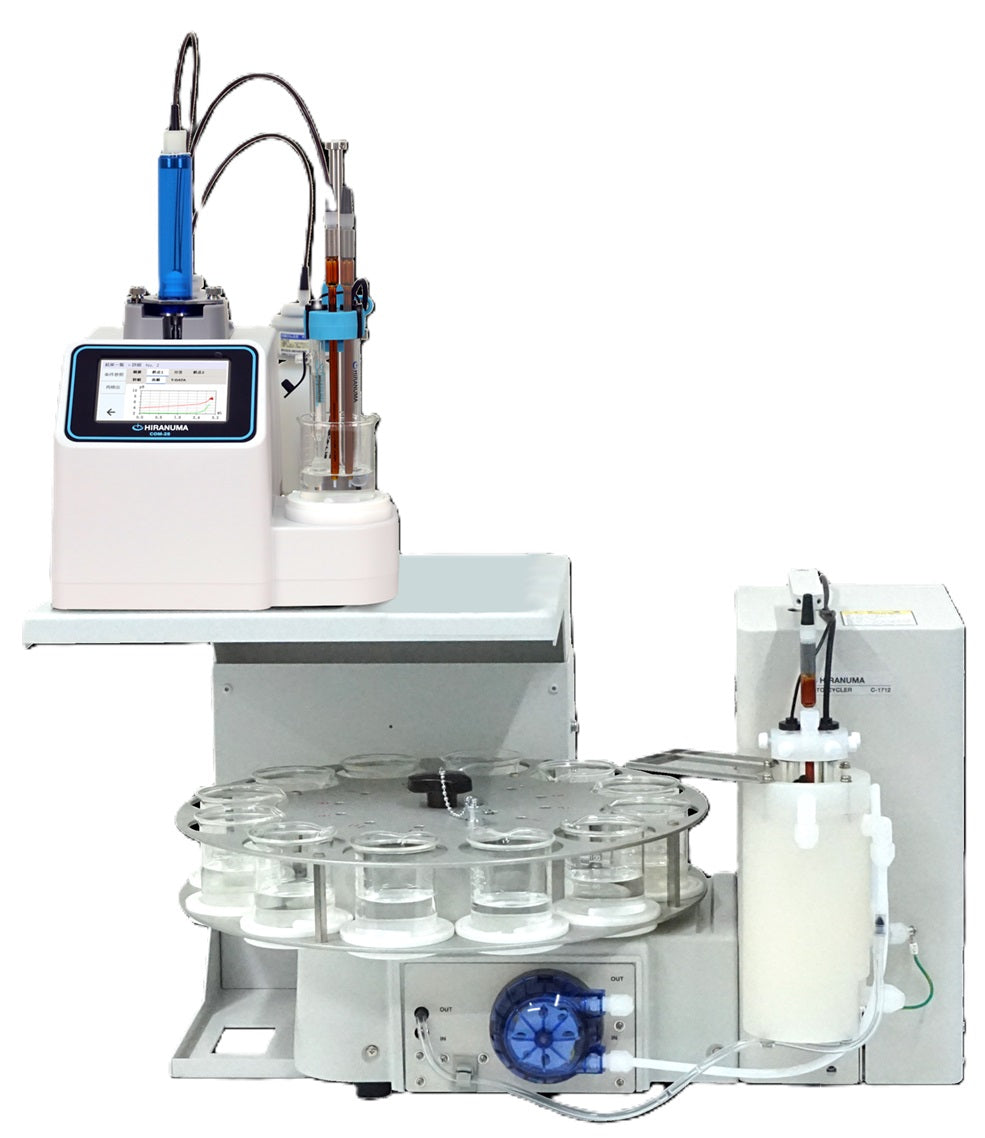| HIRANUMA APPLICATION DATA | Automatic Titrator | Data No. | H2 | Apr. 5,2019 |
| SODA PULP INDUSTRY | Fractional determination for mixture of sodium hydroxide and sodium carbonate |
1. Abstract
Sodium hydroxide and sodium carbonate have important roles as alkali component chemicals, which are used in a broad range of industries. The concentration of both components have to be determined because these are sometimes used with mixed.
This report introduces an example that the mixture solution of sodium hydroxide and sodium carbonate are fractionally determined with potentiometric titration. The titration of sodium hydroxide and sodium carbonate with hydrochloric acid proceeds as the following reaction formula:
| NaOH + HCl → NaCl + H₂O | ・・・(1) |
| Na₂CO₃ + HCl → NaHCO₃ + NaCl | ・・・(2) |
The pH reaches around 9 at the end point on the reaction formula (1) and (2). Sodium carbonate generates sodium hydrogen carbonate (NaHCO3) on the reaction (2), then continuously generated sodium hydrogen carbonate is titrated with hydrochloric acid. It reaches the end point at pH around 4. The reaction between sodium hydrogen carbonate and hydrochloric acid is described in the formula (3).
| NaHCO₃ + HCl → NaCl + CO₂ + H₂O | ・・・(3) |
The relation of titration curve and formula (1)(2)(3) is illustrated in the following figure.

2. Configuration of instruments and Reagents
| (1) | Configuration of instruments | ||
| Main unit | : | Hiranuma Automatic Titrator COM series | |
| Electrodes | : | Glass electrode GE-101B Reference electrode RE-201Z *Instead of above electrode, the following glass reference electrodes are usable. ・GR-501BZ (Glass reference combination electrode)…Fixed sleeve type ・GR-511BZ (Glass reference combination electrode)…Moveable sleeve type |
|
| (2) | Reagents | ||
| Titrant | : | 0.1 mol/L Hydrochloric acid standard solution | |
3. Measurement procedure
| (1) | Dispense 20 mL of sample into a 100 mL beaker with volumetric pipette. |
| (2) | Add 30 mL of DI water. |
| (3) | Immerse the electrodes and titrate with 0.1 mol/L hydrochloric acid standard solution. |
4. Measurement conditions and results
Examples of titration conditions
(1) Measurement condition of sodium hydroxide and sodium carbonate
| Cndt No | 1 | |
| Method | Auto | |
| Buret No. | 1 | |
| Amp No. | 1 | |
| D. Unit | pH | |
| S-Timer | 5 | sec |
| C.P. mL | 0 | mL |
| T Timer | 0 | sec |
| D.P. mL | 0 | mL |
| End Sens | 1000 | |
| Over mL | 0 | mL |
| Max Vol. | 20 | mL |
| Constant No. | 1 | |
| Size | 20 | mL |
| Blank | 0 | mL |
| Molarity | 0.1 | mol/L |
| Factor | 1.005 | |
| K | 40 | |
| L | 0 | |
| Unit | g/L | |
| Formula | ||
| (VA-VB)*K*F*M/S | ||
| Decimal Places | 4 | |
|
Auto In Pram.
|
None | |
| Mode No. | 4 | |
| Pre Int | 0 | sec |
| Del K | 9 | |
| Del Sens | 0 | mV |
| Int Time | 3 | sec |
| Int Sens | 3 | mV |
| Brt Speed | 2 | |
| Pulse | 40 | |
| 0.05 | mL | |
(2) Measurement condition of sodium hydrogen carbonate
| Cndt No | 2 | |
| Method | Auto | |
| Buret No. | 1 | |
| Amp No. | 1 | |
| D. Unit | pH | |
| S-Timer | 0 | sec |
| C.P. mL | 0 | mL |
| T Timer | 0 | sec |
| D.P. mL | 0 | mL |
| End Sens | 1000 | |
| Over mL | 0.5 | mL |
| Max Vol. | 20 | mL |
| Constant No. | 2 | |
| Size | 20 | mL |
| Blank | 0 | mL |
| Molarity | 0.1 | mol/L |
| Factor | 1.005 | |
| K | 105.99 | |
| L | 0 | |
| Unit | g/L | |
| Formula | (D-B)*K*F*M/S | |
| Decimal Places | 4 | |
|
Auto In Pram.
|
None | |
| Mode No. | 4 | |
| Pre Int | 0 | sec |
| Del K | 9 | |
| Del Sens | 0 | mV |
| Int Time | 3 | sec |
| Int Sens | 3 | mV |
| Brt Speed | 2 | |
| Pulse | 40 | |
| 0.05 | mL | |
Measurement results
Measurement results of sodium hydroxide
| Number of measurement |
Size (mL) |
Titrant Volume(mL) |
Concentration (g/L) |
|---|---|---|---|
| 1 | 20 | 2.481 | 0.3614 |
| 2 | 20 | 2.476 | 0.3588 |
| 3 | 20 | 2.474 | 0.3586 |
| Statistic calculation |
Avg. | 0.360 g/L | |
| SD | 0.0016 g/L | ||
| RSD | 0.43 % | ||
Measurement results of sodium hydrogen carbonate
| Number of measurement |
Size (mL) |
Titrant volume (mL) |
Concentration (g/L) |
|---|---|---|---|
| 1 | 20 | 0.683 | 0.3638 |
| 2 | 20 | 0.691 | 0.3680 |
| 3 | 20 | 0.690 | 0.3675 |
| Statistic calculation |
Avg. | 0.366 g/L | |
| SD | 0.0023 g/L | ||
| RSD | 0.63 % | ||
Examples of titration curves

5. Note
(1) Titration of sodium carbonate
Sodium carbonate was directly titrated with the hydrochloric acid standard solution in this report. There is another method to titrate the barium carbonate generated by the addition of barium chloride in advance. This method is useful to determine low concentration of sodium carbonate, the inflection point for the carbonate become single on the titration curve. (First inflection point comes from only sodium hydroxide, and second inflection point comes from only sodium carbonate (barium carbonate).) However, this method is unsuitable to determine the high concentration of sodium carbonate because the precipitation amount of barium carbonate increases and the titration speed gets slow.
(2) Environment for titration
Atmosphere contains about 0.03 % carbon dioxide. When carbon dioxide is absorbed into sample solution during titration for sodium hydroxide, the titrant volume consumed for sodium hydroxide decreases, while it increases on the titration for sodium carbonate. Flowing nitrogen gas to the headspace on sample solution serves as an effective measure against this problem. Using air passed through soda lime absorption column instead of nitrogen gas also has a positive effect.
Keywords: Sodium hypochlorite, Sodium chloride, Residual alkali, Available chlorine, Precipitation titration
*Some measurement would not be possible depending on optional configuration of system.

